If you’re looking to understand how to choose the running shoes that are right for you and your feet, then this complete guide is perfect for you!
As a running coach, I’ve not only tested many different types of running shoes over the past two decades, but I really understand the struggles that runners face in finding the perfect shoes for themselves!
That’s why, my site is filled with shoe comparisons, reviews, and resources to empower you to get the right fit.
Understanding what matters when choosing running shoes is critical to training.
It can, understandably, become quite overwhelming when picking the right shoes for yourself. Am I looking for the best cushioning, trying to figure out my gait, or does my foot shape matter the most?
If these are some of the questions popping into your mind, don’t worry. By the end of this article, you’ll have everything you need to head on out and find the pair that works for YOU.
So, let’s get started!
What’s the Best Running Shoe?
A question I get asked a lot by many runners I coach and talk to over social media is ‘what’s the best running shoe, Amanda?.’
Well, there is no such thing as the ‘best’ running shoe overall. But, there is such a thing as the best running shoe for YOU.
This means that a shoe that’s perfect for your running buddy or even your running coach, might not be the perfect shoe for you.
Finding the right shoe is a combination of understanding everything there is to running shoes (we cover that next), your personal preferences and comfort, and buying from the right running shoe store (we’ll cover that too!).
Here, let’s talk about your personal preference and comfort. Everything in this article is based on science and what research has taught us over years!
BUT, at the end of the day, the shoes need to feel comfortable when you wear and test them out; if they don’t, then they just aren’t the right ones for you.
Follow your gut instinct, while keeping the next few factors in mind when heading to a running shoe store.
Factors to Consider When Choosing Running Shoes
There are numerous factors that affect what type of running shoes will be right for you.
I’ve broken it all down into seven main factors that you should consider and keep in mind. While that may sound like a lot, don’t worry; this article is simple to understand, even for beginners.
1. Understanding Purpose
The first question you need to ask yourself is: what am I going to use these running shoes for? If the first thing that popped into your mind was, ‘running, of course (duh)’, don’t worry I get it.
But taking it a step further, it’s not just about running but the type of running you’ll be doing.
Are these going to be the shoes you use for your first marathon? Are you looking to run faster and set a new PR? Or are you more of a casual runner?
Figure out your running goals, or have a little idea of the direction you’re headed first. Once you know that, let’s move on to the next factor.
2. Surface and Terrain
The next thing we need to consider is what type of surface and terrain you’ll be running on. Are you a road runner? Or a trail runner? Or do you run solely on your treadmill at home?
It is essential to choose running shoes based on the terrain you run on the most to prevent injury and maximize running performance.
Road Running
When you run on the road, it’s obviously a harder and more uniform surface than running on softer surfaces such as grass or dirt.
The impact of running on the road is greater on our knees, ankles, and other weight-bearing joints as a result.
For this reason, road running shoes typically include shock absorption and support features to keep you protected from injury.
Trail Running
Trail running shoes, on the other hand, prioritize grip, traction, flexibility, and cushioning in response to uneven terrain.
Typically, they also have a sturdy upper to protect your feet from rocks, nettles, and other hazards.
Both Trail and Road Running
If you intend to do both road running and some trail running, choose trail shoes with low to moderate tread to help you give enough traction on the trails, but also provide the support features and shock absorption you need on the roads.
Treadmill Running
If you run mostly on a treadmill, your shoe selection shouldn’t be too different from a road shoe.
But due to the extra cushioning in a treadmill compared to roads, you might be able to choose a shoe that is a little bit lighter or less cushioned if it is a better fit all-around.
3. Type of Runs
Now taking it a step further, whether you’ll be road running, trail running, or both, what type of runs do you plan on doing most of the time?
Are you a runner who likes going out for a casual run once or twice a week? Are you a long-distance runner ramping up the mileage and gearing toward your next marathon? Or are you into sprinting and racing?
Let’s break down why each of these are different:
Casual Running
If you are running only a few times a week or racing an occasional short-distance race such as a 5K or a 10K, then many different types of running shoes will be great for you.
In general, standard running shoes to ones with a little extra cushioning will work great for your needs.
Long-Distance Running
If you expect to run more than 25-30 miles each week, cushioning may become a more important aspect. Especially if you will be running over 10+ miles in a single session. This is when focusing on cushioning and heel drop becomes more crucial.
Considering that shoes only have a 300-500 mile lifespan, it is strongly recommended to rotate two pairs of shoes when training at greater mileage in order to prolong the life of your shoes and limit the chance of injuries.
This might be two pairs of the same shoes or two completely different types to give your body a little variety.
Racing and Faster Running
Standard shoes can work for running fast. However, a lighter, less cushioned shoe may be preferable if speed is your goal.
If you do a lot of races, tempo runs, intervals, or any other type of speed work, it’s a good idea to have a pair of shoes that is a little lighter in weight. But if the only type of running you do is short sprints, you probably don’t need anything more than a lightweight or performance running shoe.
It’s important to note though that the lifespan of a minimal shoe is less than that of a conventional or more traditional running shoe.
4. Understanding Your Foot
Now that you’ve narrowed down the purpose of your runs, your goals, the terrain you’ll be running on, and the type of runs you typically do, it’s time to move on to understanding your feet a bit better.
Everyone’s feet are different. There are many different factors that together make our feet unique compared to others. This includes the length of your feet, how wide they are, your arch type, wear pattern, and more. Let’s look at them one by one:
Foot Length
When considering how a running shoe should fit, having enough toe room is arguably the most crucial place to start.
It’s best to leave about a thumb’s width between the end of your longest toe and the end of the shoe. This is commonly referred to as ‘room in the toe box.’
Shoes that are too small can cause black toenails, blisters, and hammertoes that can set you back quite a bit when it comes to training. So it’s important to make sure your shoes are the right size for you.
Don’t ever assume you know the size of your shoes since certain brands differ in the way they size their shoes, and certain types of shoes also sit differently.
But that’s not all; always head to a running shoe during the evening since our feet tend to swell overtime during the day so you might end up buying a pair of shoes that are tighter than necessary if you try them on in the morning.
Foot Width
Another factor to take into account when it comes to the shape of your feet is width. Whether your feet swell or you need more space, make sure they aren’t pressing the sides or falling over the last. The fit should be snug but not too tight. It shouldn’t pinch, but it shouldn’t feel incredibly loose either.
Arch Type
The kind of arch you have or how flexible your arch is might affect how your foot moves. Having a particular arch type is neither good nor bad in and of itself, but it can affect the style of shoe you need based on how your body moves.
Are you curious about your arch type but not sure what it is? It’s usually a good idea to do the wet test.
To do this, start by placing a piece of paper down on the floor. Next, wet the bottom of your foot a little bit and step right onto the paper. You can tell whether you have a high, medium, or low arch by the sort of imprint you see.
Footstrike
The next thing to consider is your foot strike which can help you understand how your feet pronate. People used to say you could look at the wear pattern on the bottom of your shoe to figure this out, but this has been debunked.
Pronation is the way your foot moves when you walk or run. In this way, our gait may display a pattern of supination, neutral pronation, or overpronation (under pronation).
If you have neutral pronation, then that means the rolling motion normalizes along the center of your feet. For neutral runners, neutral shoes are the way to go.
Pronate means that your feet roll inwards with each stride. This will affect the angle of your lower leg often leading to injuries. For runners with overpronation, good stability running shoes can add arch support.
Supinate means that your feet roll outwards with each stride, which will also affect the angle of your lower leg. For runners with supination, neutral running shoes or shoes with some cushioning are ideal.
If you don’t quite know whether your feet pronate, supinate, or if your gait is neutral, don’t worry – that’s where a specialty running shoe store is going to come in (but more on that later). For now, let’s move on to the next important fact to consider:
5. Types of Running Shoes
Now that we understand what pronation means, let’s look at the three main types of running shoes and how they relate
Neutral Shoes
Your typical running shoes are neutral training shoes. They are the most common running shoes you’ll come across and what MOST RUNNERS need.
These shoes are designed for runners with neutral pronation, which means your foot naturally rolls inward by no more than 15%, and your ankles and legs are appropriately positioned. Neutral running shoes typically have a curved or semi-curved last.
This is due to the shoes’ thick cushioning, which absorbs the force of footstrikes and relieves pressure on the joints, including your feet, ankles, knees, and hips.
Since weight is distributed more equally in neutral running shoes, the heel has more cushioning than the arch. They also have softer midsole support for runners with little to no pronation.
Neutral shoes lack built-in support since the entire foot makes contact with the ground, evenly distributing body weight.
For neutral arches, no correction is necessary. As a result, neutral shoes lack the motion control features seen in corrective shoes. Additionally, this makes neutral running shoes lighter, making them perfect for tempo and interval runs.
Stability Shoes
The purpose of stability running shoes is to correct overpronation in runners. As mentioned above, the inward rolling of the ankle as it strikes the ground is referred to as pronation.
Overpronators typically have flat feet or weak hips, which causes their feet to roll inward while they run.
Stability shoes are typically firmer and lack that cushioned feel. However, it should be noted that stability shoes are sometimes over-recommended to runners who truly need to work on hip and glute strength.
There are some similarities between stability shoes and neutral running shoes, but there are also notable differences. These shoes offer supportive features including a medial post and guide rails built into the midsole.
Motion Control Shoes
High-stability shoes, also known as motion control shoes, are designed to give extra support to runners with flat feet who weigh more than 180 pounds.
They are the most stable running shoe for severe overpronation, featuring dense foam and arch reinforcement.
Only wear this style of shoe if you have a history of injuries or a specific foot or leg issue that is affecting your gait. The heel will be relatively rigid and the shape of the shoe will be somewhat straight.
It’s also worth noting that motion control shoes tend to be heavier than other types of running shoes.
6. Level of Cushioning
We’re almost done! The level of cushioning is another really important factor to consider as it can make a world of difference in how you feel while running. Let’s look at the different types to understand this better:
Cushioned Shoes
A cushioned running shoe can range from soft foam to plush, like walking on a pillow.
The level of cushioning is largely a matter of personal preference. However, there are certain advantages for runners who supinate and can be great for those with high arches.
They’re also great for recovery runs, and that extra cushioning can help relieve the impact on your feet. But, remember, that something that’s too cushioned for you can lead to lower back pain if it relaxes your running form too much.
Maximal Shoes
Maximal shoes are those that have a much taller cushioned base. This makes them look quite massive, but they are in fact generally lightweight due to that cushion.
If you’re starting to run after an injury or are worried about joint wear, maximal shoes may be for you. It can provide more stability to your feet due to the larger base.
Remember that a maximal shoe is about the stack height, which is different than the heel-to-toe drop of running shoes.
Minimalist Shoes
Minimalist shoes, or zero-drop shoes, feature a 0mm to a very small 4mm drop from the heel to the toe of the shoe. Comparatively, traditional running shoes can have a drop of 8mm to 12mm.
Zero-drop means the shoe is flat and is often compared to running barefoot. This does not mean you can’t get a good cushion.
The concept is that with less cushioning between your foot and the ground, you have more awareness, which improves balance, strengthens the feet, and prevents heel striking.
These shoes are perfect for runners who suffer from ball of foot pain (metatarsalgia) or prefer their shoe’s cushioning to be level.
7. Personal History
The last factor you need to consider is your own personal history when it comes to running. This relates to two main things: your history of injuries, and your past experience with other shoes and brands.
If you’ve already had a running shoe you absolutely love but maybe doesn’t fit right anymore (our feet change over time!), then that’ll be a good place to start and then see what needs to be changed.
The other part of this is what kind of injuries you may have suffered from in the past. That’ll be a good indication of what hasn’t worked for you, or what you might need to pay special attention to.
Tips for Choosing the Right Running Shoes
Now that you have a general understanding of all the factors to consider, it’s time to head to your local running store for a gait analysis and to choose the right running shoes for you!
Here are a few important tips to keep in mind:
- Make sure to go for a specialty running shoe store that stocks multiple brands so that you can try different ones to find the right pair of shoes for you. Going to brand stores will strip you of the ability to try other brands that might work better for you.
- Look for a local running store with interested, knowledgeable staff that ask you questions related to the factors we’ve listed above.
- Look and colors shouldn’t be a primary factor at all when picking the right running shoes.
- Bring along the pair of socks you wear the most while running to have those on when trying out your shoes. This can affect how your shoes fit.
- If you use any orthotics or running insoles, you should bring those along too to test your shoes.
- Always remember that the most important factor is ALWAYS comfort.
- Check the store’s policies and make sure they allow you to test out the shoes and maybe return them if you realize they don’t work for you after a few runs.
At the end of the day, finding the right pair of shoes involves a lot of trial and error alongside understanding the factors listed in this article.
Run in it!!!
For goodness sake would you buy a car with out seeing how it drives? Then don’t ask your body to haul you around in a shoe that feels like a pea in the proverbial mattress.
- Running shops allow you to put on the shoe and take it outside for a spin if you frequently run on the road. A short jog around a show room with cushioned carpet doesn’t give you the same feel as a few minutes on concrete.
- Many running shops will also let you bring it back after just a few weeks for an exchange if you find you just hate it upon taking it for a real run.
- I often recommend buying from REI or direct with Nike as they have a great return policies. You can test out a shoe and if it’s not right, send it on back!
- Unlike a new car you shouldn’t get carried away with features or make a decision on color, unless you are a super star.
Frequently Asked Questions for Choosing Running Shoes
Are department store running shoes ok?
Great for walking, even some short miles, but not consistent running. Department store shoes do not contain the same features as the pricier shoes at your local running store, which is indeed why you need to go to a running store to find a proper distance shoe.
Why buy from a running store?
Running stores are staffed by runners, which means they can provide you with valuable feedback from fitting thousands of people, along with their own experiences. And no, they don’t care how new you are, slow, fast or long distance, they’re excited to have someone else running.
Also important to note that while they will put you on a treadmill to look at gait, if the shoe they recommend doesn’t feel good, don’t buy it!
Just because a store offers gait analysis and then states you “need” a stability shoe, don’t buy the shoe if you find it uncomfortable in your test run.
- Running store tests look only at the roll of your foot and ankle (many are now offering this online)
- Stride uses the WHOLE leg, so a recommendation for a stability shoe could be a clue you need to do some hip strengthening and not get a shoe that allows your poor form to continue
- Consider a stride analysis if you are consistently being recommended a stability or motion control shoe
- As you can tell I’m a fan of fixing what’s wrong vs shoes which often lead to injury. This is not to say some don’t benefit from them!
How long do running shoes last?
Running shoes can last more than 400 miles if you are on a treadmill or a lighter-weight runner or using a more minimalist shoe. If you’re hitting the roads, the shoe is likely to break down faster.
Many runners use the feeling of their legs after runs as a gauge for when it’s time for new shoes, rather than focusing on a specific amount of miles on the shoe. For example, if my calves start to feel tight or my quads are a little sore when I’ve been training consistently, I know that usually means my shoes have reached their limit.
Why do they change the number on running shoes?
Don’t assume that if you like your current shoe, you’ll like the updated version. Some of their upgrades can change the feel of the shoe from a slightly higher arch to a more narrow toe box, definitely test it out before you buy.
How do I know if I need minimal or maximal?
Looking at the wear pattern on the sole of your shoe can help pinpoint if you have any gait issues, like rolling your foot inward consistently and wearing down the inner side of your shoe. This lets you know that support shoes and PT are going to help prevent injury…but the minimal vs maximal is a different ballgame!
I wrote an entire post on why I actually use both and how you can decide >>
Why do running shoes cost so much?
Marketing? No really, having worked with a lot of brands over the years I can tell you that an immense amount of science and testing goes into every brand.
As someone who doesn’t like to waste money, it took me a while to swallow the cost of $100+ for a running shoe, but once you break down the cost per run and the bonus of injury prevention they become worth every penny.
Can I just use the same pair of running shoes all the time?
NO. Long run shoes, speed workout shoes, trail shoes, there are different reasons to have multiple shoes, but the biggest is actually injury prevention.
Part of that is not letting your body get lazy by allowing say a support shoe to compensate for your weak hips. There’s also a lot of science behind it, check out this entire post on why and how to rotate your running shoes!
What you need to know before buying new #running shoes! Click To TweetHow Should Your Running Shoes Fit?
While your running shoes don’t have to feel like stepping on a cloud, it’s kind of a nice little bonus. What’s most important is how they stay in place when you move and how much space is available for your foot to swell with increased mileage.
Shop for your running shoes at the end of the day when feet tend to be more swollen, no need to jam them in to something pointy at this point, let them out in all their glory!
Since feet swell during endurance events, this will help ensure you get a great fit not just for the beginning of your run, but for the end when you don’t want to suddenly develop blisters or feel cramped.
I’ve covered this in depth in How to Make Sure Your Running Shoes Fit Properly >>
Please give that a read to make sure you don’t end up with blisters or black toenails!
What Shoes Do I Run In?
I run in a variety of shoes, part of that is discussed in rotating your running shoes.
In general, I found for my IT Band to be happy I like the shoes with a smaller heel to toe drop, that is not the same as being minimal.
- Saucony Kinvara (speed/mid-distance runs)>>
- Hoka One One Clifton >>
- New Balance Fresh Foam 1080 (long runs)>>
- Hoka One One Speed Goat (trail) >>
- Saucony Endorphin Pro (speed) >>
- On Cloud Monster (easy runs)>>
Looking for more running shoe recommendations?
Other ways to connect with Amanda
Instagram Daily Fun: RunToTheFinish
Facebook Community Chatter: RunToTheFinish
Get more running tips: Pinterest
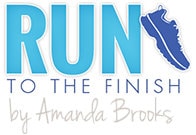
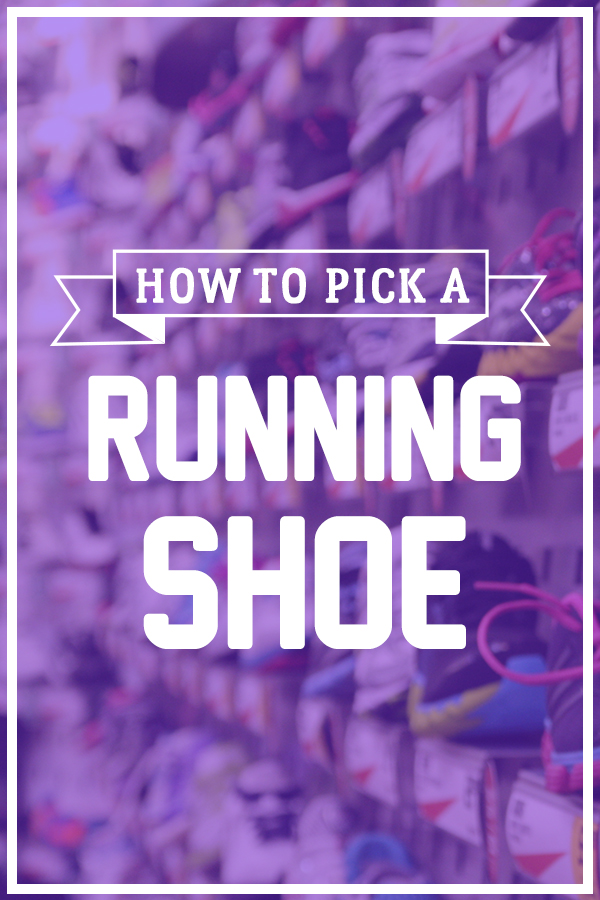
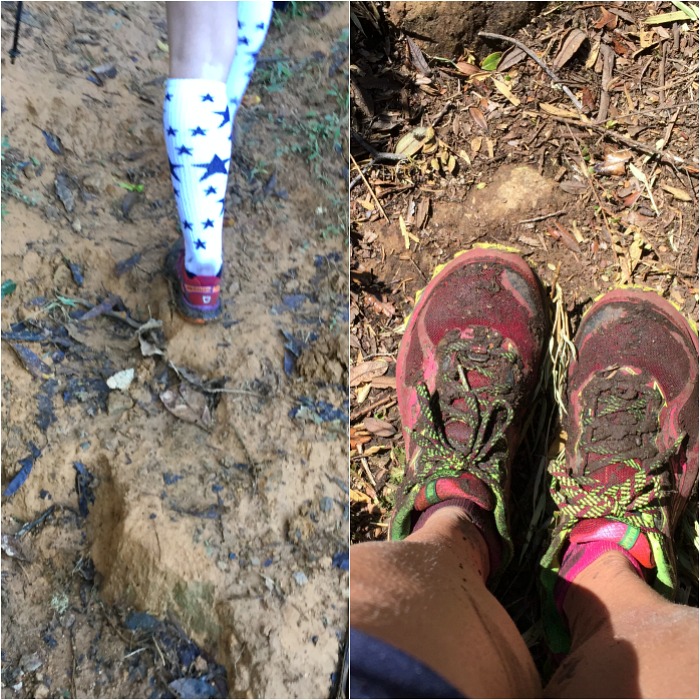

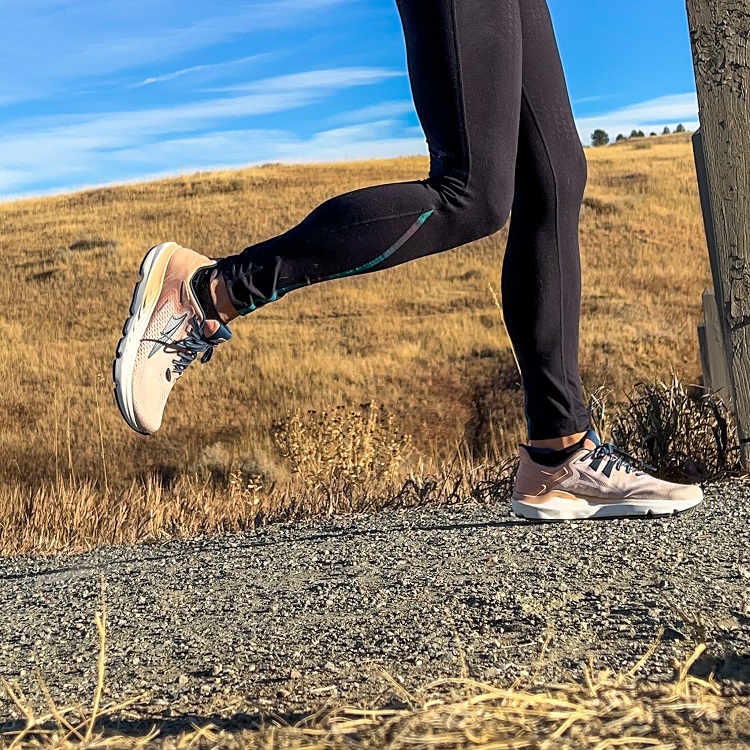

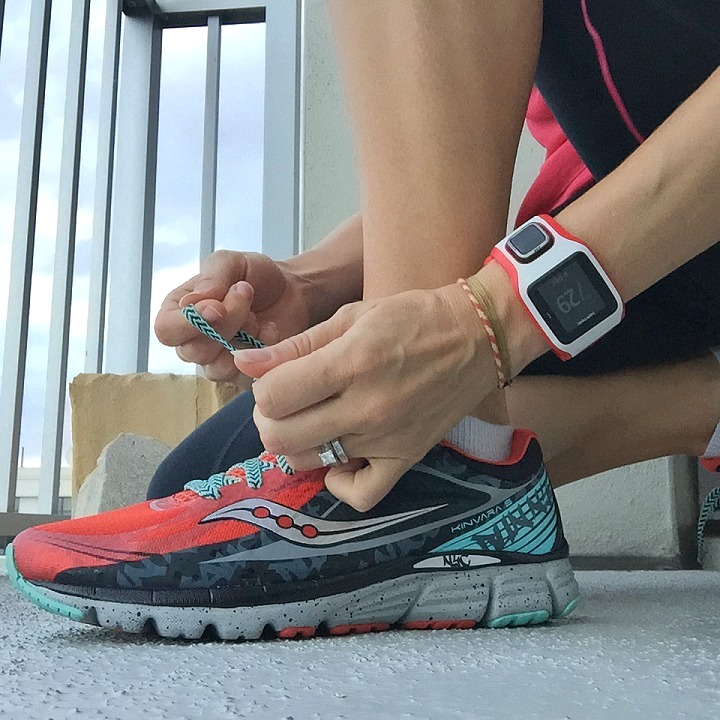

 NYC Marathon Course Tips + Common NYC FAQs
NYC Marathon Course Tips + Common NYC FAQs

Emily Swanson
I loved getting fitted for a running shoe for the first time at a running store; it was really a good way to get started. I have found a brand of shoe that really works for pretty much all the kinds of running that I do. I can’t quite do minimal, but I don’t need a lot of cushioning.
You really explained this so well; it’s so important to have those good shoes for taking care of your feet.
Katie @ Hungry Runner
It’s kind of annoying how many things you need to know before actually being able to pick a good shoe for yourself, but this is a great guide! I’ve gone through this so many times and sometimes I still feel overwhelmed! :P
Lillian
Thank you for the very informative post! I am a new runner and in need of some serious shoes. Thanks for the guidelines. I did not know soo much was involved in the process of picking out shoes but now I feel more confident to approach the shoe store.
Lisa @ Mile by Mile
I’ve tried a bunch of different shoes over the past year, and keep ending up in Brooks. They are the only ones that fit me perfectly right out of the box! I’ve been mostly wearing the Pure Flows for about 5 years. I like a low heel to toe drop and a neutral shoe, although I feel like I could use a tiny bit of stability (or just better hip strength!!)
Eric Troldahl
It took me three tries to find a shoe that really worked well for me as a walker. The first one was too stiff and the second one doesn’t give me enough support on long walks so I only use it for 10K or shorter walks. Starting from a EEEE width narrows down the options though.
amanda
Have you tried New Balance, they seem to be the best with width options!